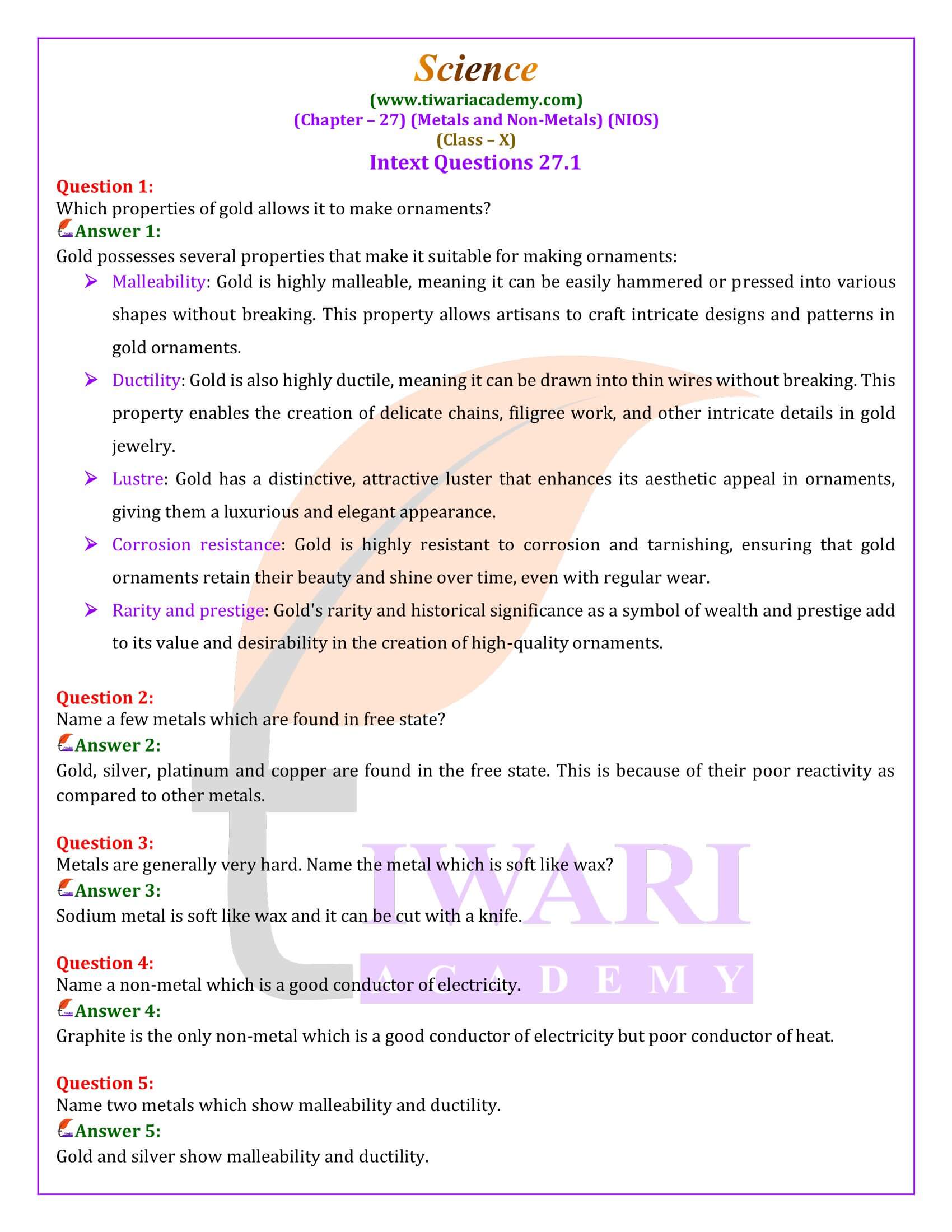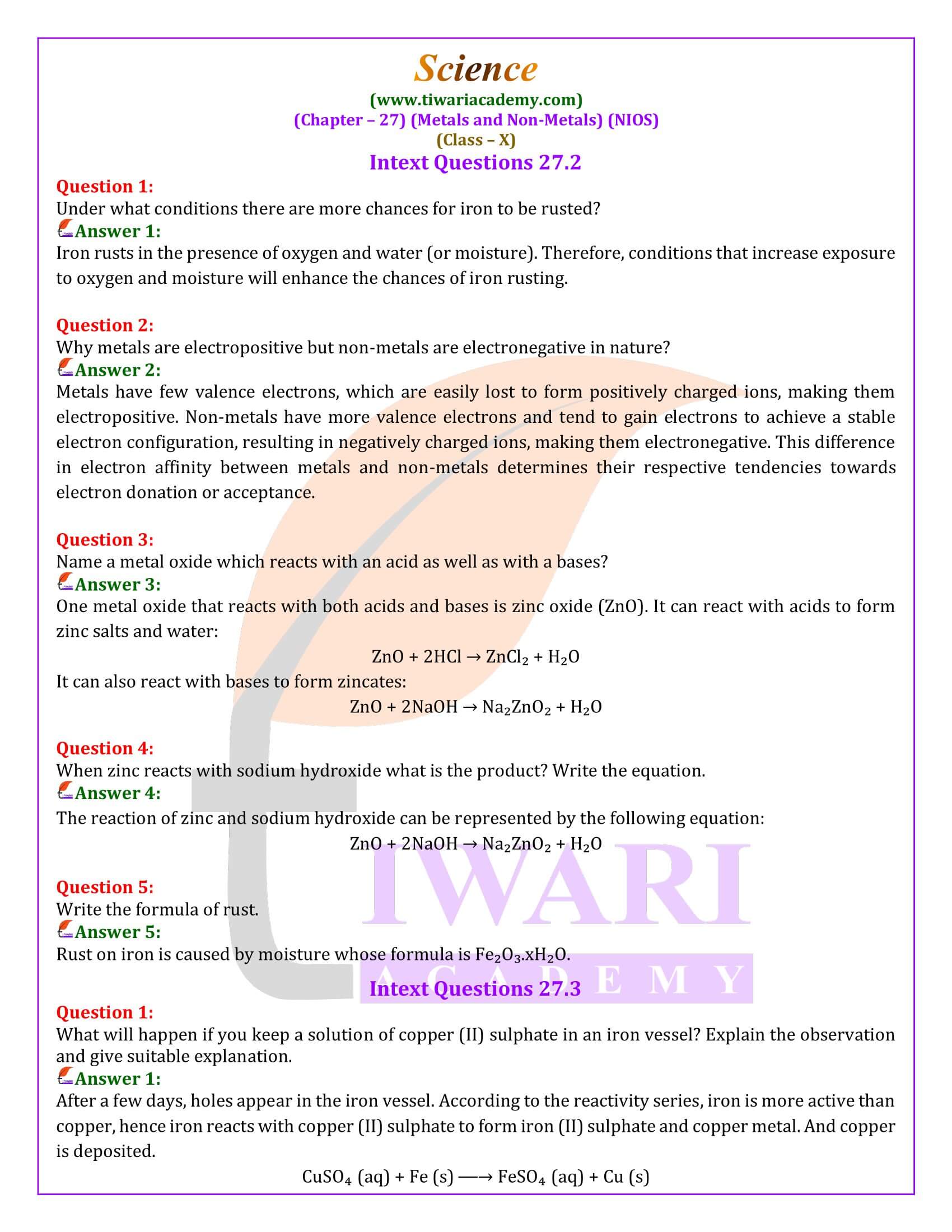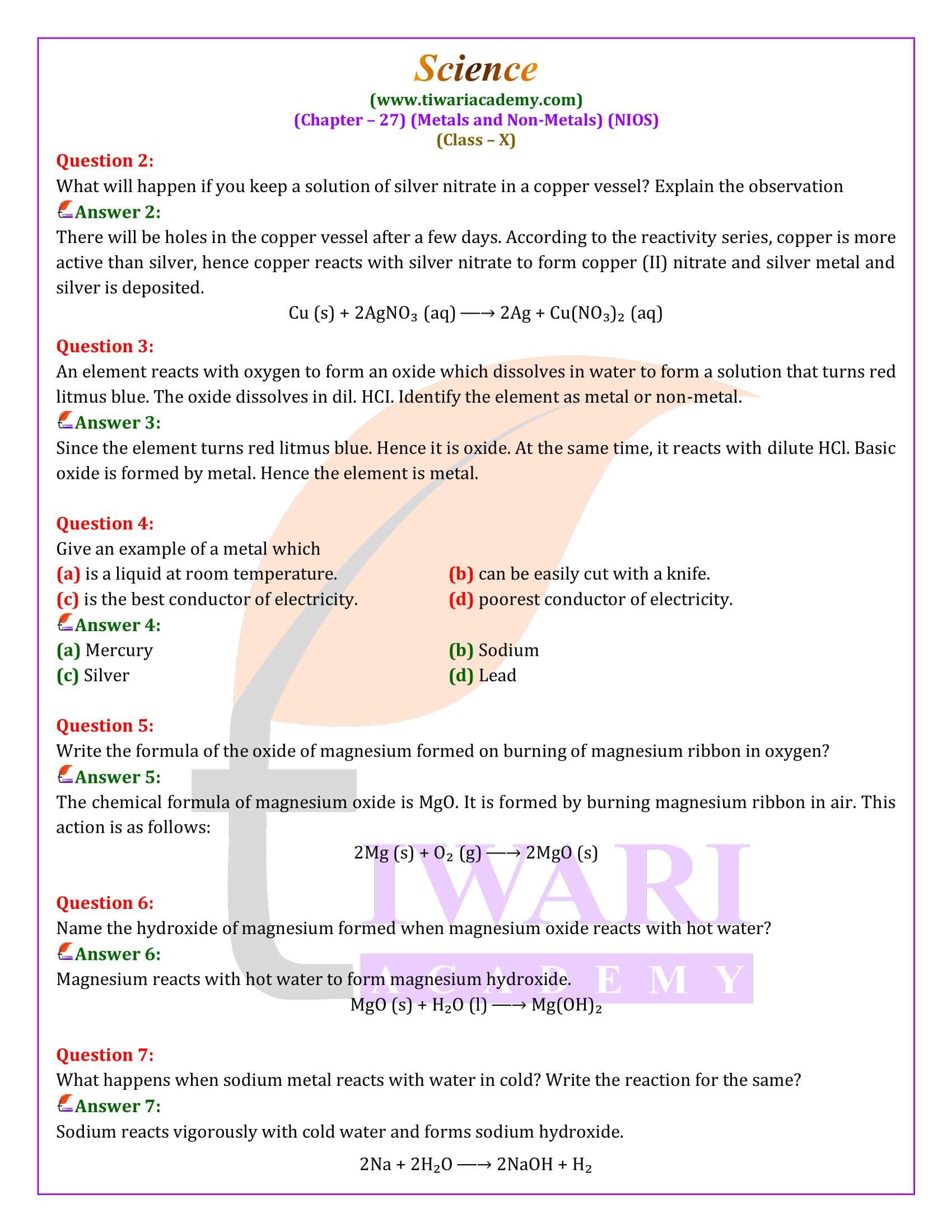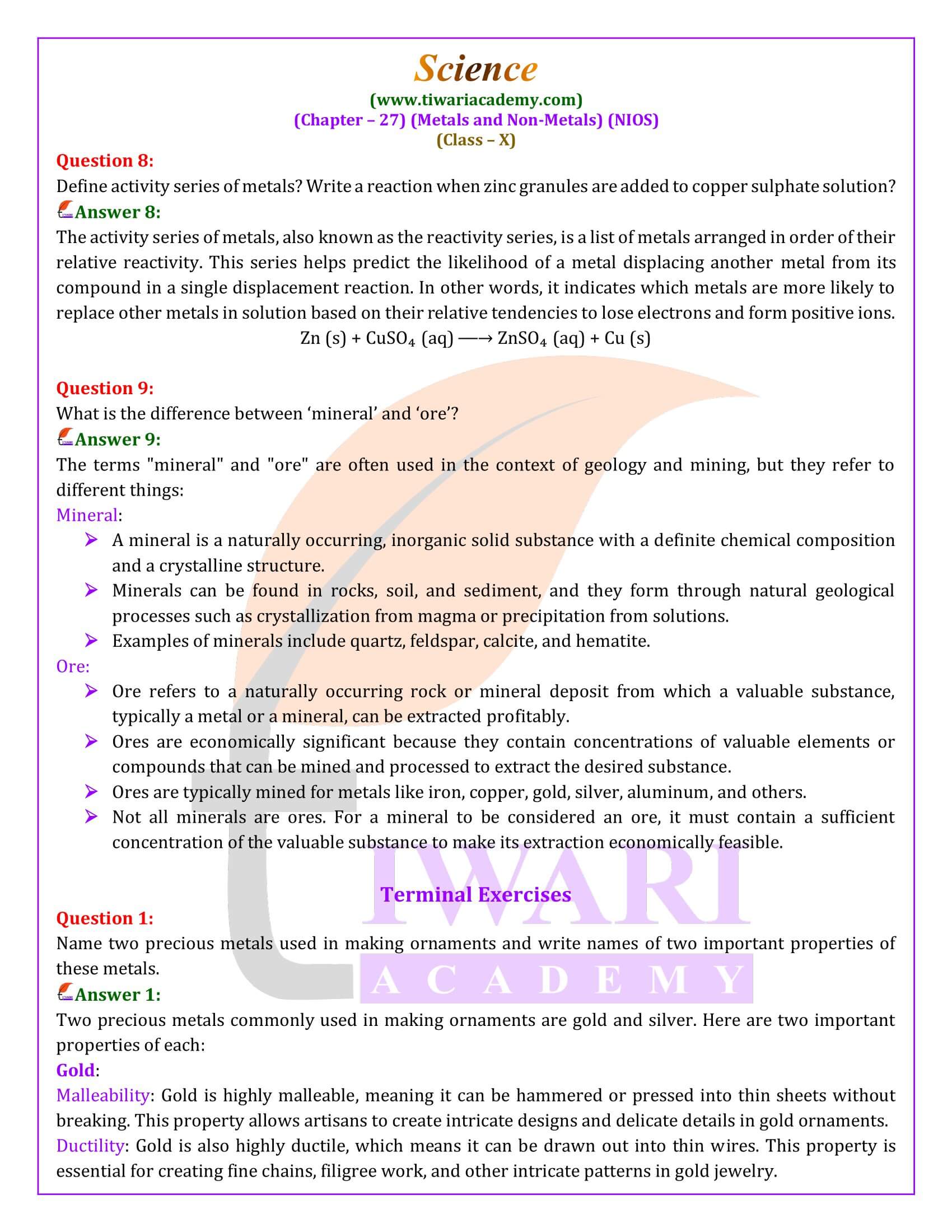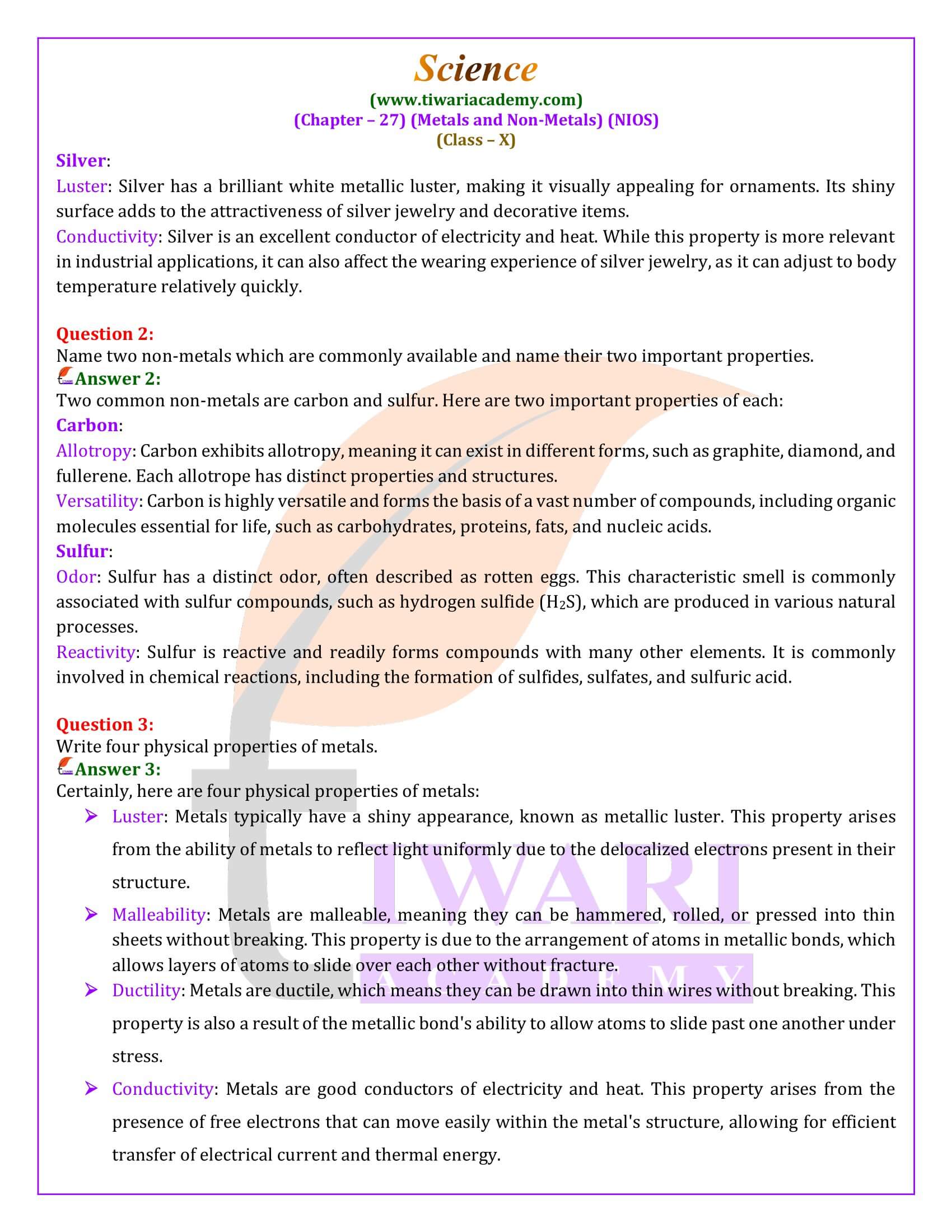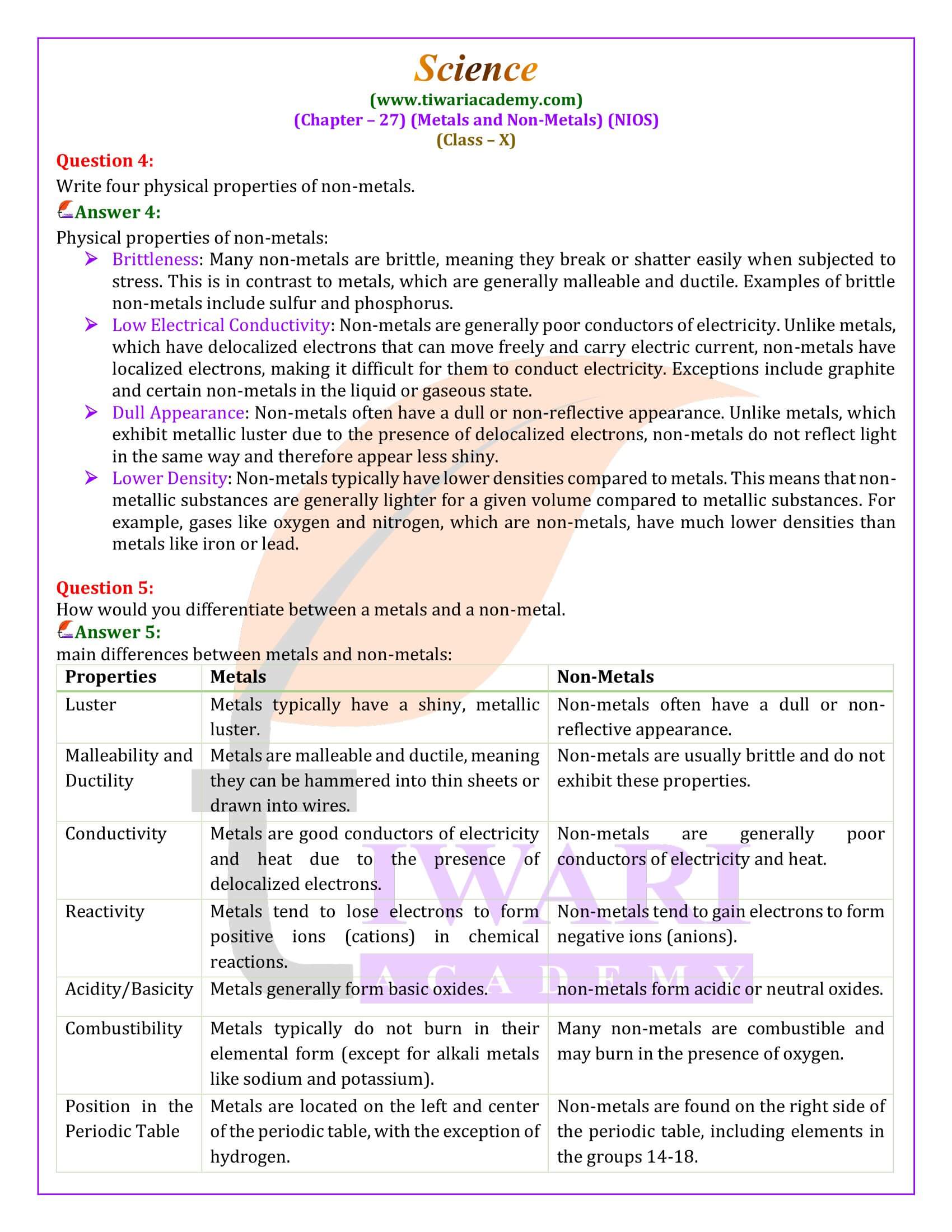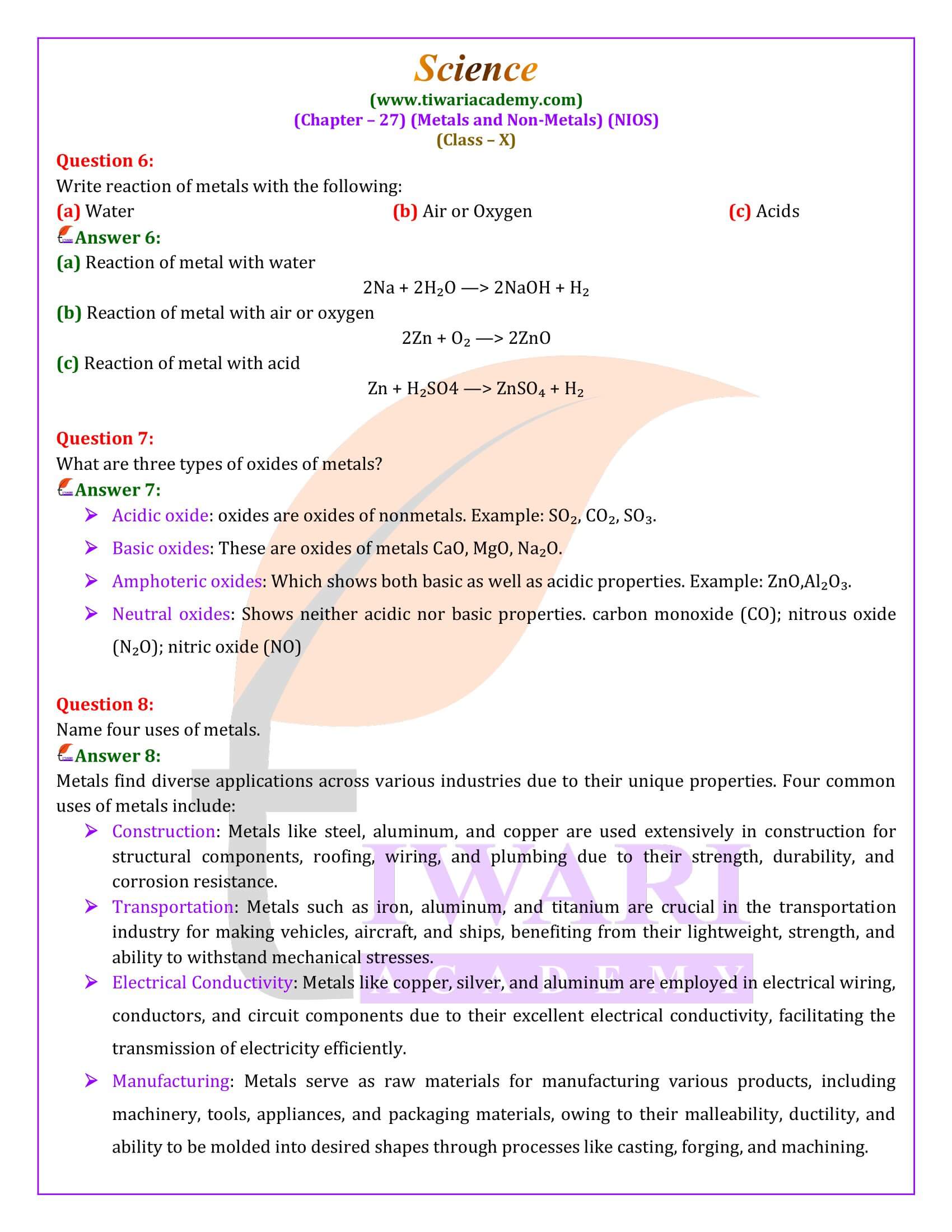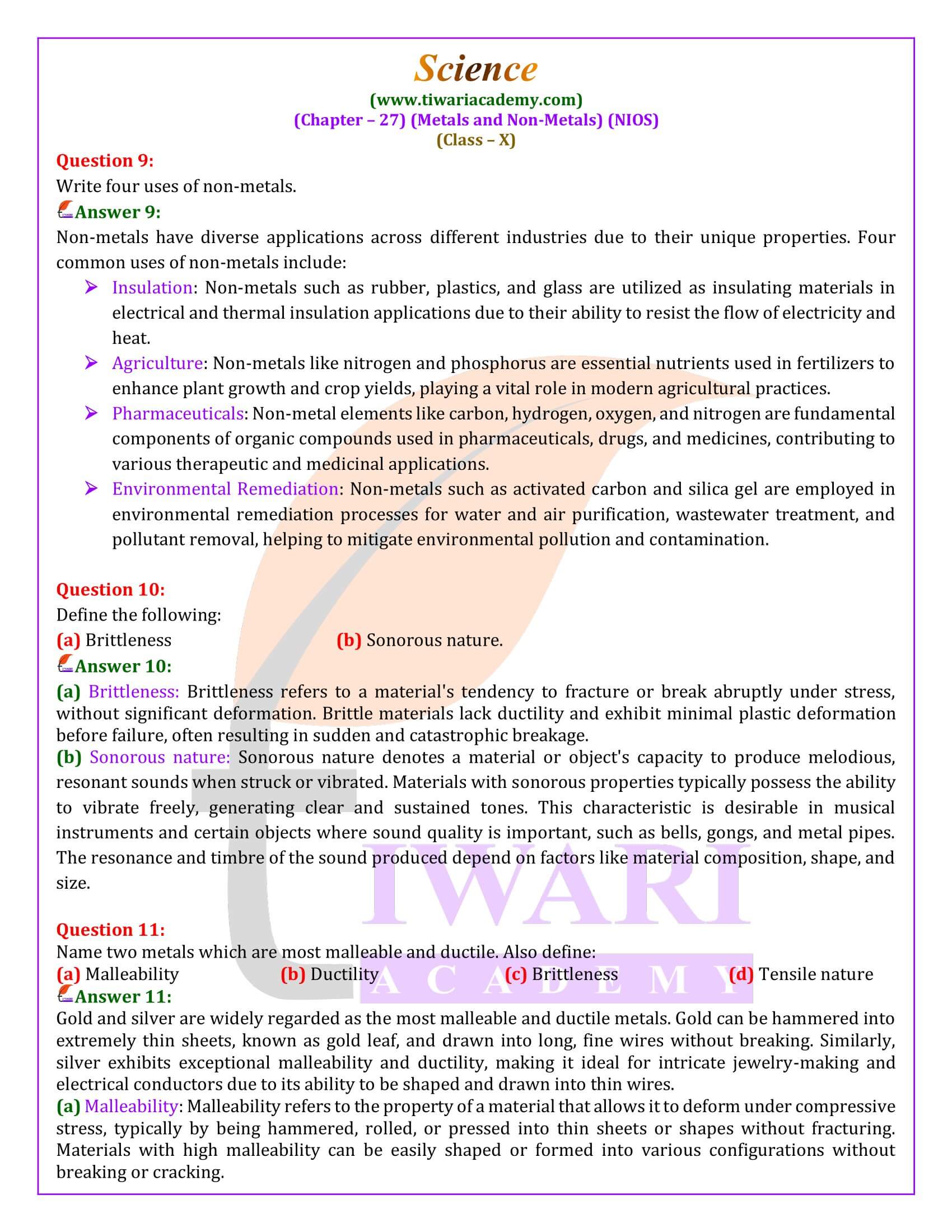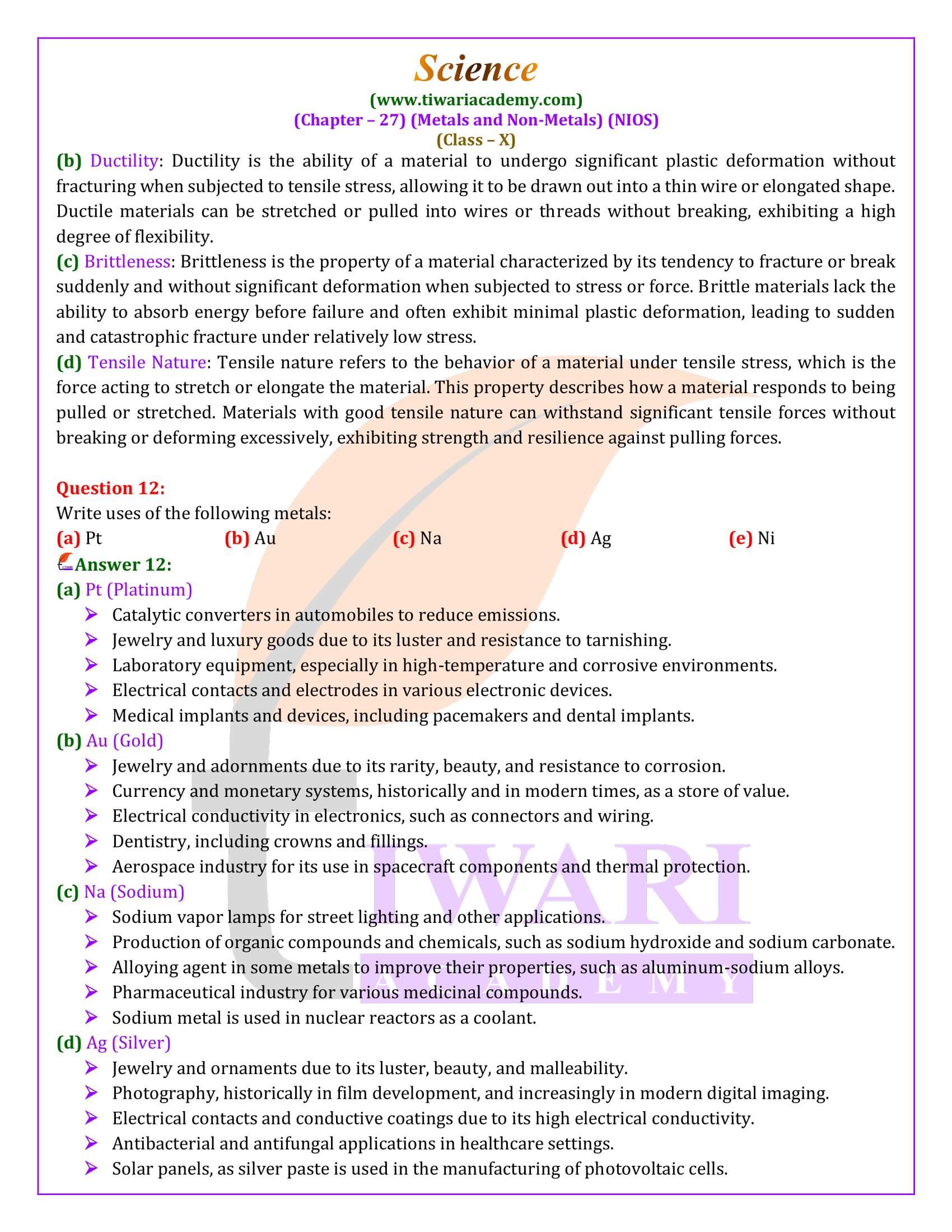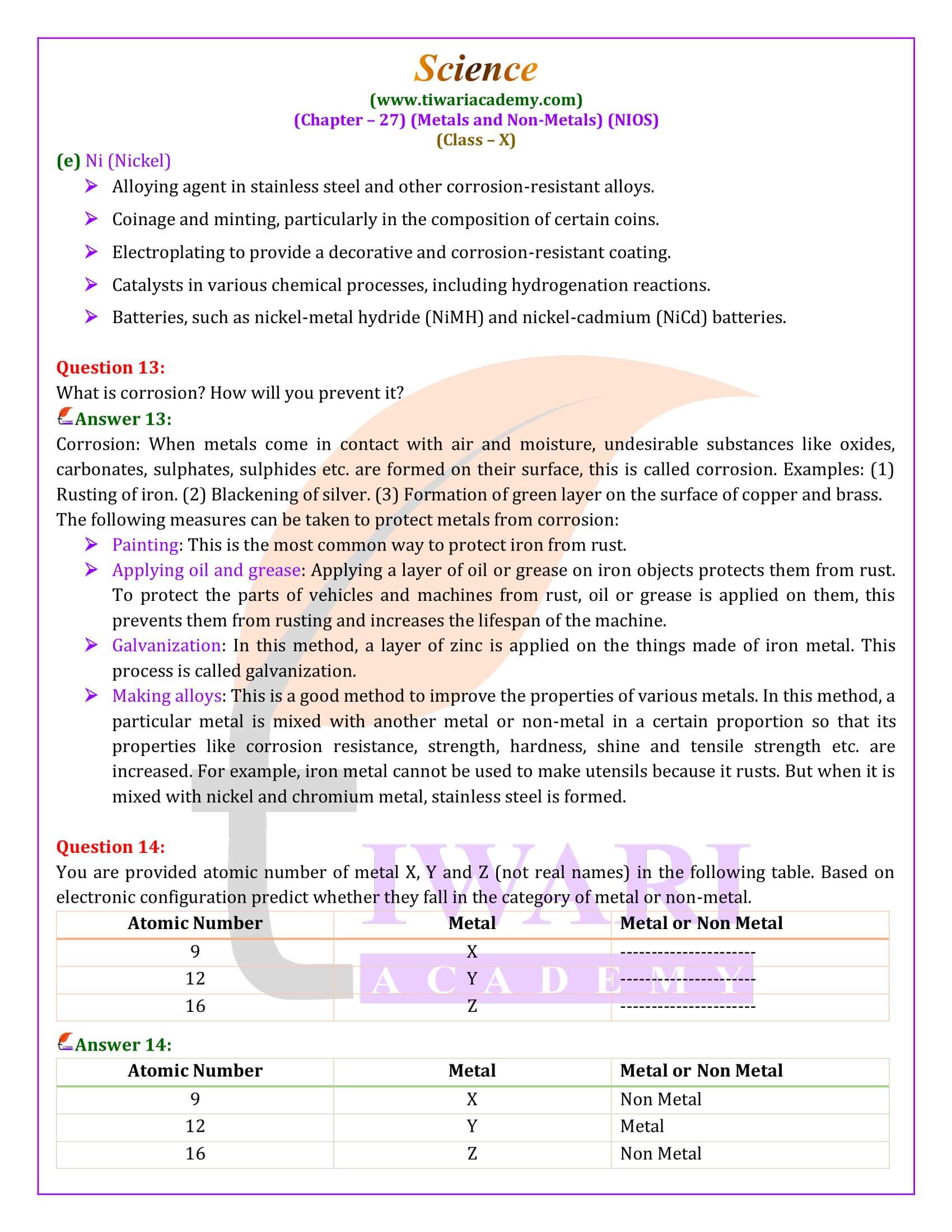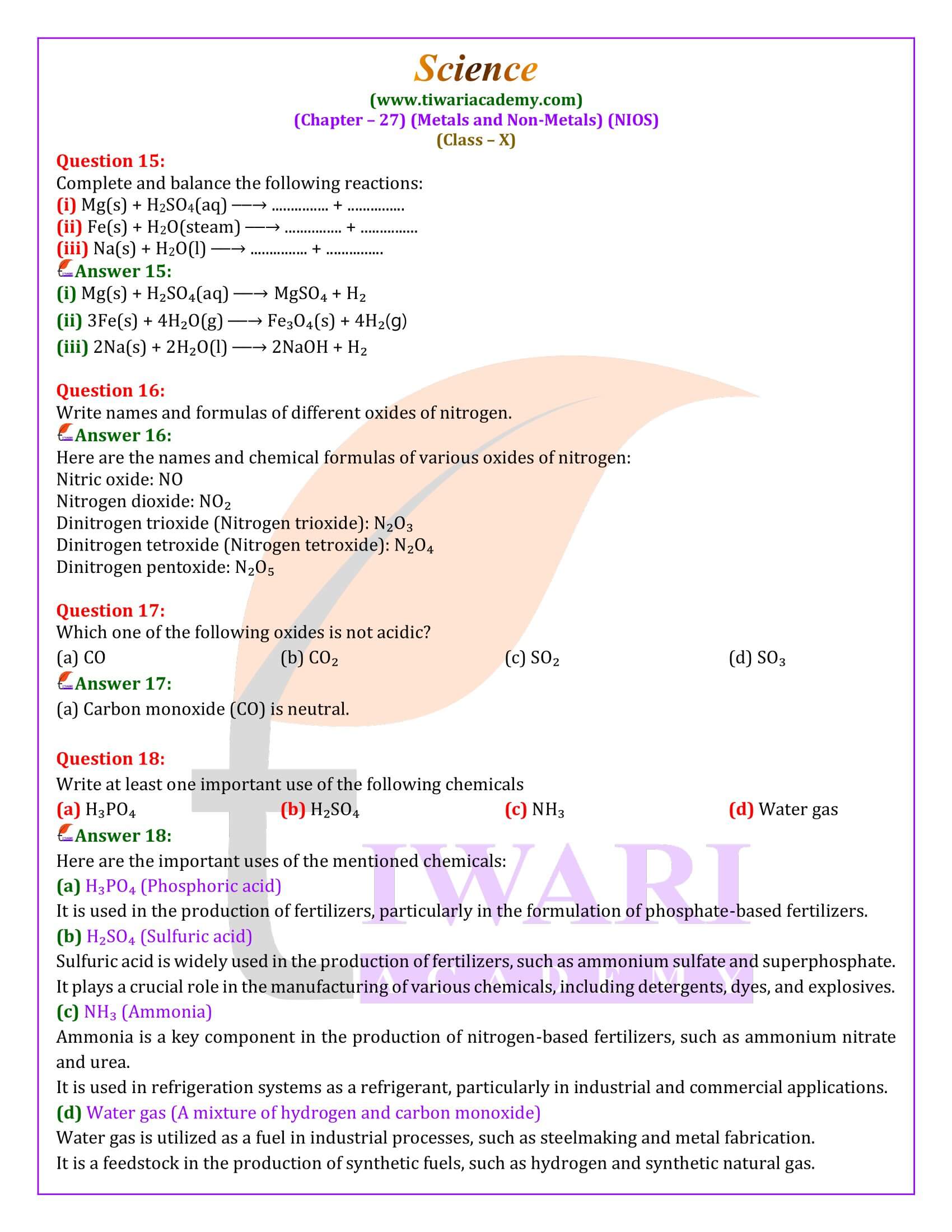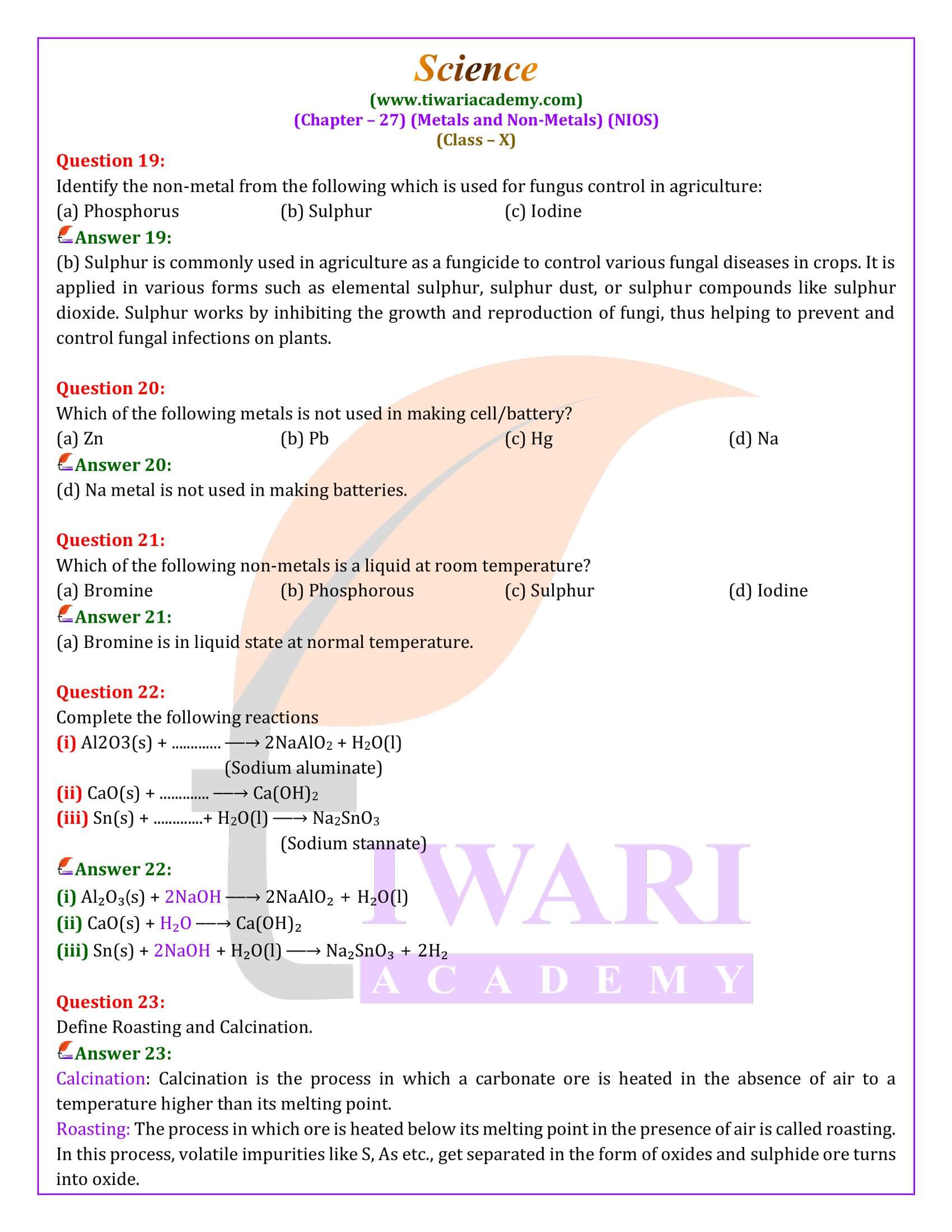NIOS Class 10 Science Chapter 27 Metals and Non-metals in Hindi and English Medium updated for new academic session 2024-2025. Students of NIOS Class 10 can take help in Science chapter 27 using the question answers given here to prepare for exams.
Metals and Non-metals
NIOS Class 10 Science Chapter 27 provides a detailed exploration of metals and non-metals, emphasizing their significance in everyday life, their physical and chemical properties, and their roles in various industries. This discussion spans from their general characteristics and applications to their reactions with other elements and compounds.
Introduction to Metals and Non-Metals
At the outset, NIOS 10th Science Chapter 27 introduces metals and non-metals, which are omnipresent in our surroundings—from household items to industrial applications. The primary distinction between metals and non-metals is based on their physical properties like malleability, ductility, conductivity, and appearance. For instance, metals are generally hard, shiny, and good conductors of electricity, making them suitable for a range of applications such as in electrical wiring and cookware. In contrast, non-metals like carbon and sulfur are typically soft, dull, and poor conductors of electricity.
Properties and Reactions
NIOS Class 10 Science Chapter 27 explains the reactions of metals and non-metals with oxygen, water, acids, and bases. Metals react with oxygen to form metal oxides that are usually basic but can also be amphoteric (reacting with both acids and bases). Non-metals react with oxygen to form non-metal oxides, which are generally acidic. These reactions are crucial for understanding corrosion, an undesirable reaction that leads to material degradation, commonly observed as rusting in metals.
Industrial Importance
Metals and non-metals play pivotal roles in the economy through various industries such as steel plants for metals and fertilizer factories for non-metals. NIOS 10th Science Chapter 27 outlines the industrial processes involved in extracting metals from ores—a process known as metallurgy. This includes techniques like roasting and electrolysis, essential for obtaining pure metals from their natural mineral sources.
Corrosion and Prevention
One significant focus is on corrosion, particularly rusting, which is the oxidation of iron when exposed to oxygen and moisture. Various methods to prevent corrosion, such as painting, oiling, and galvanizing (coating iron with zinc), are discussed. These preventative measures are critical for extending the life of metal products.
Applications and Uses
The NIOS Class 10 Science Chapter 27 extensively covers the applications of metals and non-metals. Metals are used in construction, machinery, and transportation due to their strength and durability. Non-metals find applications in industries like electronics and pharmaceuticals, where their chemical properties are invaluable. For example, silicon is essential in the semiconductor industry for making computer chips.
Educational Significance
Throughout, NIOS Class 10 Science Chapter 27 stresses the educational importance of understanding the properties and uses of metals and non-metals. It encourages interactive activities like experiments to observe the properties of different metals and non-metals, enhancing the learning experience.
The document serves as a comprehensive guide on the fundamental aspects of metals and non-metals, highlighting their indispensable roles in both daily life and global industries. The knowledge of how these elements interact with other substances and their practical applications is crucial for students and professionals in the sciences.
This examination of metals and non-metals not only provides foundational scientific knowledge but also connects it to real-world applications, emphasizing the ongoing importance of these materials in numerous sectors of the economy and in everyday technology.
